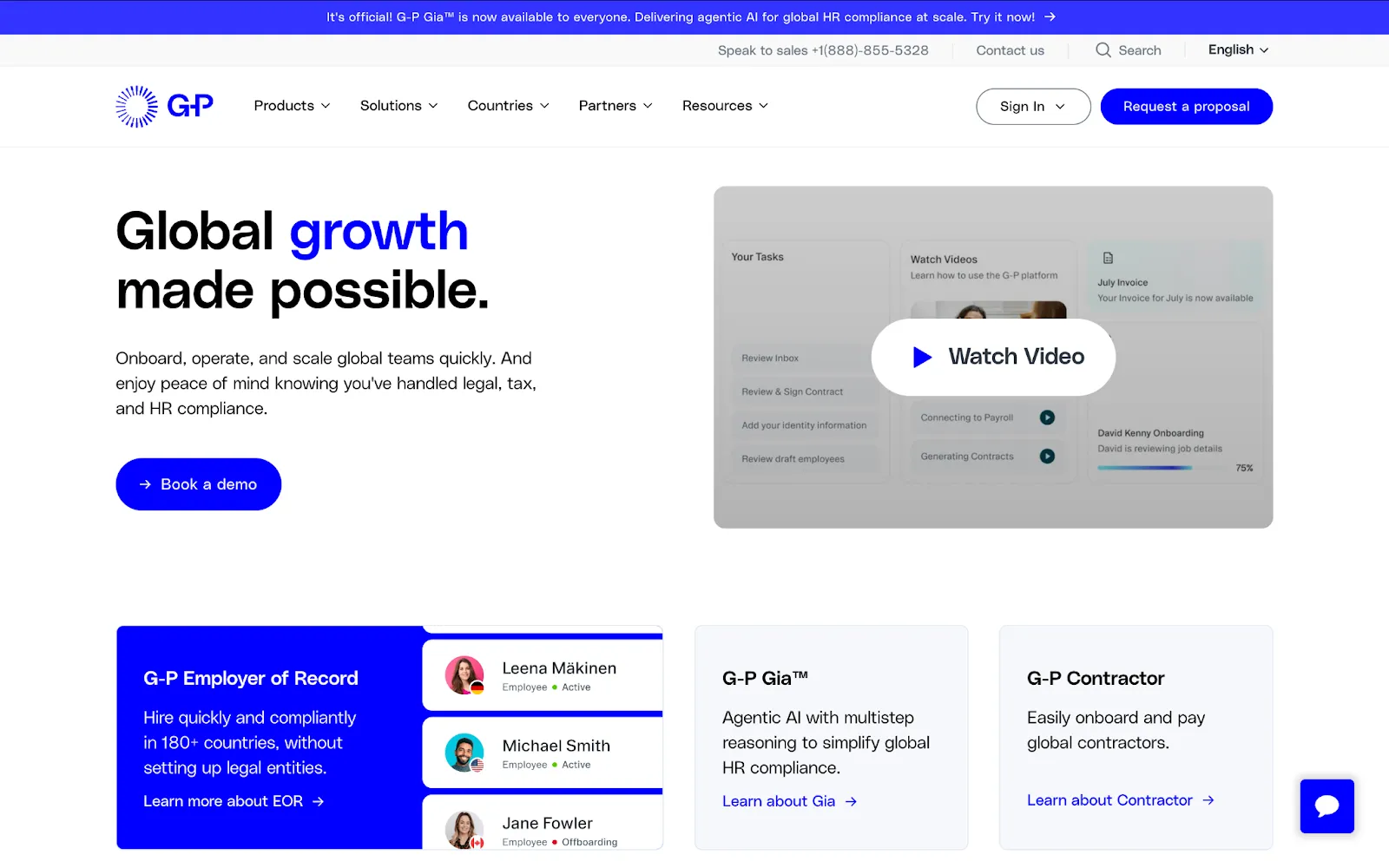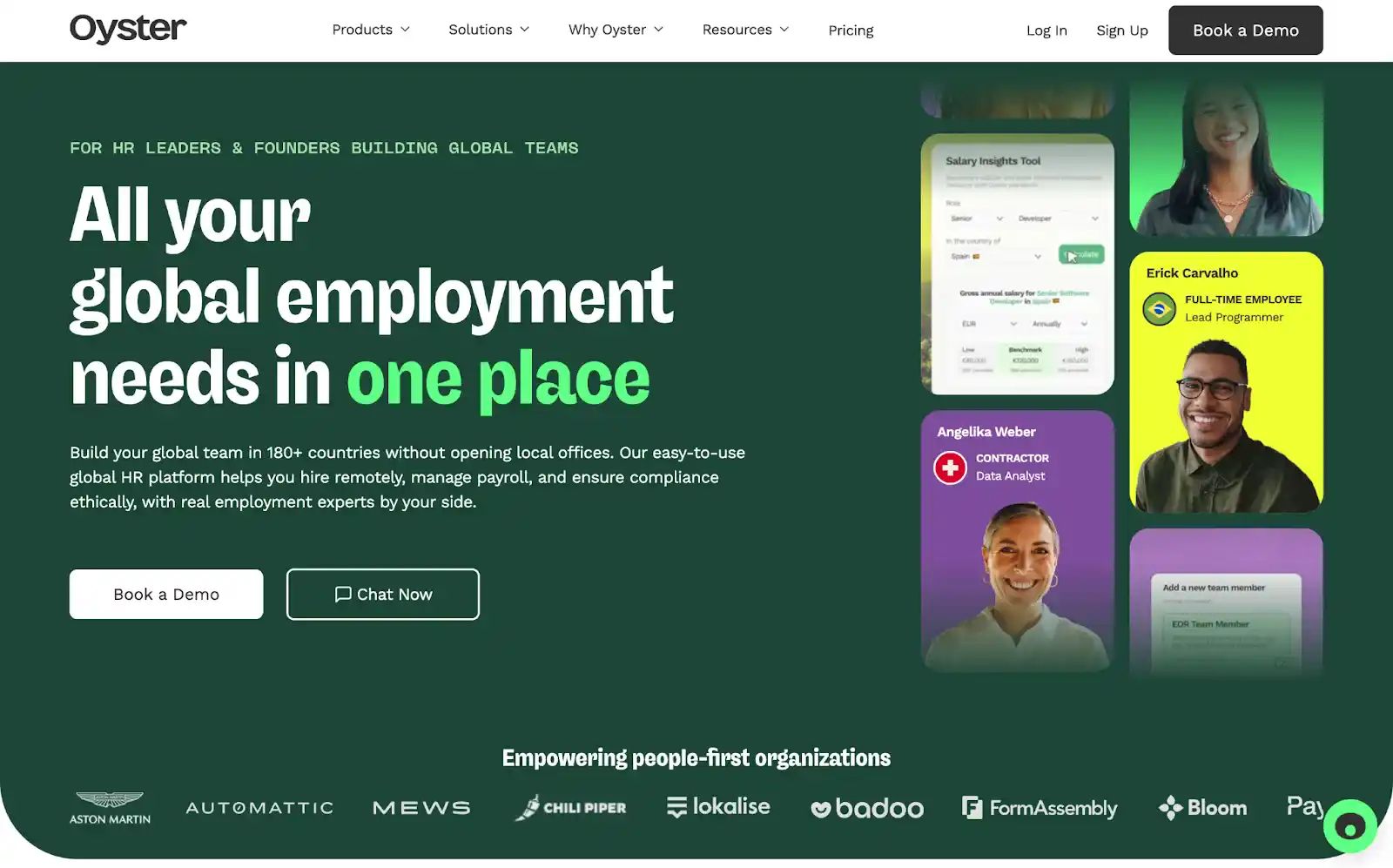Table of Contents
The USA has one of the biggest startup markets in the world; over 5 million new businesses were registered in 2023 alone. But even with all that activity, finding the right talent can feel like searching for a needle in a haystack.
Yes, the USA might have a stellar reputation as one of the richest sources for tech talent. It’s home to the world-renowned Silicon Valley, nearly all of the world’s most popular social media companies, and the birthplace of Sam Altman’s infamous OpenAI, after all. But with many states facing skill shortages, the case for international hiring has never been stronger.
However, overseas recruitment isn’t the kind of task you can leap into without proper preparation. Onboarding foreign talent involves wading into the weeds of payroll, labor laws, compliance, and international regulations. In short, it’s beyond the reach of most startups.
That’s exactly why Employer of Record (EOR) platforms exist. They take care of all the details above on your behalf. This way, you can hire across states or continents without dealing with a single inch of red tape.
But not all EORs are made equal, so we’ve rounded up our own personal top 10, each one picked out for its AI-startup-boosting qualities.
What is an EOR?
An EOR, or Employer of Record, is basically a middleman that makes hiring employees in different states or countries much simpler. Instead of setting up a legal entity everywhere you want to hire, the EOR becomes the official employer on paper, handling payroll, taxes, benefits, and compliance while your team manages the day-to-day work.
Think of it like having a trusted HR partner everywhere your talent is. You still get to choose who you hire and how they work, but the EOR takes care of the boring, complicated stuff that could otherwise slow you down or land you in legal trouble.
For AI startups trying to grow fast, this is a game-changer. You can onboard engineers, data scientists, and other specialists across the country (or even internationally) without worrying about state-specific labor laws, tax paperwork, or benefits administration.
In short, an EOR lets you focus on building your product while they handle the paperwork. And when speed and efficiency matter as they always do for startups, that’s worth its weight in gold.
1. Remote

Overview: Remote is a well-established EOR platform that simplifies global hiring for startups. Whether you’re hiring in Texas or across the globe, Remote handles all the complexities of employment, allowing you to focus on scaling your AI startup.
Key Features:
- Global Coverage: Supports hiring in over 190 countries.
- Compliance Assurance: Ensures adherence to local labor laws and regulations.
- Integrated Payroll: Streamlined payroll processing across multiple regions.
- Benefits Management: Offers customizable benefits packages tailored to local standards and regulations.
- Security Focused: Utilizes robust security measures to protect sensitive data.
Pricing: $599 per employee per month (paid annually) or $699 per employee per month (paid monthly). No platform, onboarding, or setup fees.
2. Papaya Global

Overview: Papaya Global offers a unified platform for global payroll and workforce management. It’s designed to streamline the complexities of international hiring, making it a solid choice for AI startups seeking to efficiently expand their teams.
Key Features:
- Automated Payroll: Automated payroll processing across multiple countries.
- Compliance Management: Ensures compliance with local labor laws and tax regulations.
- Data Security: Adheres to international data protection standards.
- Workforce Analytics: Provides insights into workforce metrics and performance.
- Integration Capabilities: Seamless integration with existing HR and ERP systems.
Pricing: Starts at $599 per employee per month.
3. Deel

Overview: Deel is a versatile EOR platform that caters to startups with diverse hiring needs. It offers a range of services from full EOR solutions to contractor management, making it adaptable for AI startups at various stages of growth.
Key Features:
- Flexible Hiring Options: Supports both full-time employees and contractors.
- Global Compliance: Ensures compliance with local labor laws in over 150 countries.
- Payroll Services: Offers global payroll processing with multi-currency support.
- Benefits Administration: Provides customizable benefits packages.
- Integration Support: Integrates with popular HR and accounting software.
Pricing: Starts at $599 per employee per month, $49 per contractor per month.
4. Globalization Partners

Overview: Globalization Partners enables AI startups to hire talent in over 180 countries without the need to establish local entities. Their platform simplifies the complexities of international employment, ensuring compliance and efficiency.
Key Features:
- Global Reach: Supports hiring in over 180 countries.
- End-to-End Services: Handles payroll, benefits, and compliance.
- Local Expertise: Provides in-country experts to navigate local regulations.
- Rapid Onboarding: Facilitates quick onboarding processes.
- Scalable Solutions: Offers scalable solutions to accommodate business growth.
Pricing: Pricing available upon request.
5. Remote People

Overview: Remote People is a fast-growing EOR platform that not only manages payroll and compliance but also helps AI startups with recruitment support. For early-stage founders who don’t yet have a dedicated hiring team, this can be a game-changer if you get both compliance management and help in finding the right candidates under one roof. According to independent EOR comparator RemotePad, Remote People is ranked among the leading USA EOR companies.
Key Features:
- Recruitment + EOR: Offers both hiring support and employer-of-record services.
- Transparent Pricing: Clear, flexible pricing models starting at just $199 per employee per month.
- Compliance Assurance: Ensures all employment processes meet U.S. labor laws and regulations.
- Payroll & Benefits: Provides streamlined payroll along with locally compliant benefits.
- Scalability: Designed to grow with startups as they expand teams across the U.S. or internationally.
Pricing: Starting at $199 per employee per month, with no hidden fees.
6. Rippling

Overview: Rippling is a versatile platform that combines HR, IT, and payroll management into a unified solution. It’s particularly beneficial for AI startups aiming to streamline operations and ensure compliance across various jurisdictions.
Key Features:
- Integrated HR & IT: Manage employee data, devices, and software access from a single platform.
- Global Payroll: Automate payroll processing in multiple countries, ensuring timely and accurate payments.
- Compliance Management: Stay compliant with local labor laws and tax regulations across different regions.
- Benefits Administration: Offer customizable benefits packages tailored to local standards and regulations.
- Scalability: Easily scale operations as your startup grows, adding new employees and locations without hassle.
Pricing: Pricing starts at $8 per employee per month for core HR services. EOR services are available at an additional cost, with pricing details provided upon request. Rippling offers a free trial for core HR functionalities.
7. Omnipresent

Overview: Omnipresent provides a streamlined EOR platform tailored for startups hiring remote talent worldwide. Their services include payroll, compliance, and benefits management, all designed to simplify the complexities of global employment.
Key Features:
- Global Payroll: Processes payroll in over 160 countries.
- Compliance Assurance: Ensures adherence to local labor laws.
- Benefits Administration: Offers customizable benefits packages.
- Contractor Management: Manages contractors across different regions.
- Integration Support: Integrates with popular HR and accounting software.
Pricing: Starting at £499 per employee per month (approximately $669 USD).
8. RemoFirst

Overview: RemoFirst provides AI startups with an affordable EOR solution, offering services such as payroll, compliance, and benefits management. Their platform is designed to be user-friendly and cost-effective, making it suitable for startups looking to scale efficiently.
Key Features:
- Affordable Pricing: Offers competitive pricing for EOR services.
- Global Coverage: Supports hiring in over 185 countries.
- Compliance Management: Ensures adherence to local labor laws.
- Visa and Work Permits: Provides visa and work permit services in over 85 countries.
- Dedicated Support: Offers dedicated account managers and 24/5 customer service.
Pricing: Starting at $199 per employee per month.
9. Oyster

Overview: Oyster offers a comprehensive EOR platform that supports AI startups in managing remote teams across the globe. Their services include payroll, compliance, and benefits management, all accessible through an intuitive interface.
Key Features:
- Global EOR Services: Supports hiring in multiple countries.
- Payroll Processing: Manages payroll across different currencies.
- Compliance Management: Ensures compliance with local regulations.
- Employee Benefits: Offers benefits packages tailored to local standards.
- Integration Capabilities: Integrates with existing HR systems.
Pricing: Starting at $599 per employee per month.
10. RemotePass

Overview: RemotePass provides a straightforward EOR solution for AI startups, offering services like payroll, compliance, and benefits management. Their platform is designed to be transparent and easy to use, with clear pricing and no hidden fees.
Key Features:
- Transparent Pricing: Offers clear and upfront pricing.
- Global Coverage: Supports hiring in multiple countries.
- Compliance Assurance: Ensures adherence to local labor laws.
- Benefits Administration: Offers customizable benefits packages.
- User-Friendly Interface: Provides an intuitive platform for managing global teams.
Pricing Starting at $349 per employee per month.
With the right EOR on your side, finding and hiring the best talent for your AI startup is easier than ever. And whether you’re prioritising affordability, automation, or market expertise, there’s an option for you listed above. For more on the world of remote work, check out these vital cybersecurity practices for remote work, or head to our Insights index to view any of our archived articles.